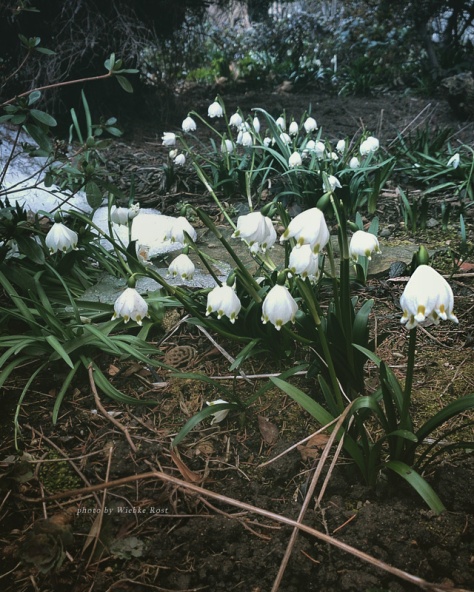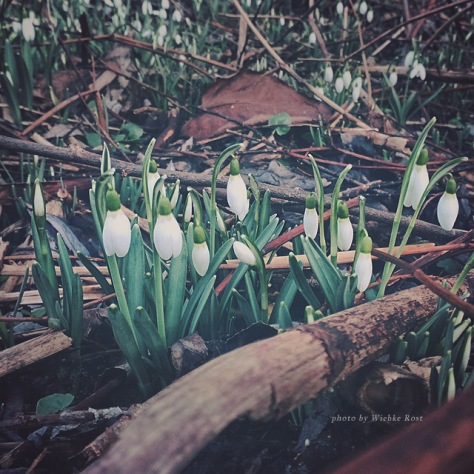
Two early flowering plants in the amaryllis family (Amaryllidaceae), the common snowdrop (Galanthus nivalis) opens its flowers just a few weeks earlier than the spring snowflake (Leucojum vernum). Both carry white, bell-shaped flower heads, sporting a green or a yellow spot on each sepal. Both do also contain poisonous alkaloids, that are a natural self-defense against pests and animals. The same alkaloids are also found in plants of the Narcissus genus.
The flowers of the spring snowflake typically appear after the snow melts, usually in late February and beginning of March. They are shaped like a cup, which gave them the name Märzenbecher in German, literally meaning “March goblets”. The Latin name Leucojum consists of the Greek word leucos for “white” (a bright, shiny white) and ion for “violet”. The flowers emit a sweet fragrance. The epithet vernum comes from the Latin word for “spring”. Other names are snowbell, dewdrop and St. Agnes flower.
The flowers of the snowdrop open in early February, often as early as Candlemass. They are more tender and when still closed, resemble a tear drop or look like a popular type of earring, called Schneetropfen in German. The English flower name snowdrop is thought to be a direct translation. The name Galanthus derives from the Greek words gala for “milk” and anthos for “flower”, whereas the Latin epithet nivalis means “of the snow” or “snow-covered”.

For some reason the snowdrop features more prominently in folklore and is now the flower associated with February, Candlemas cleansing rituals and the virgin Mary. I have blogged about this earlier. Interestingly, it seems to be missing in medieval scripture and early Christian paintings. Therefore, the snowflake is to be found on a painting of the Paradise Garden from the early 15th century. Here it is placed next to the infant Jesus and below the hem of Mary’s blue dress:

I found this painting thanks to the Met Museum’s garden blog and include it here, as it features many interesting flowers… Another fragrant, white flowering plant portrayed there is the lily of the valley (Convallaria majalis). It is a distant relative of the former and flowers much later, in May. Though named after the biblical “lily of the valleys”, it is uncertain which plant is originally referred to in the Song of Songs.
The spring snowflake is found spreading across river valleys and forest glades, taking advantage of the early spring sun and blooming when the trees are still leafless. I remember the sight of snowflake-covered meadows in the Polenztal, Saxon Switzerland: shiny white flower-cups and droplets from melting snow, reflecting the light of the spring sun; in the distance the sound of the bickering brook…
It is not surprising, the white flowers of early flowering plants would become symbols of purity and holiness. But there are also darker aspects connected to each of them, some of which I’m currently researching in context with a new incense formula. More about this later…
References:
Springs Snowflakes, by ferrebeekeeper + Snowdrop and Snowflake , at metmuseum.org +